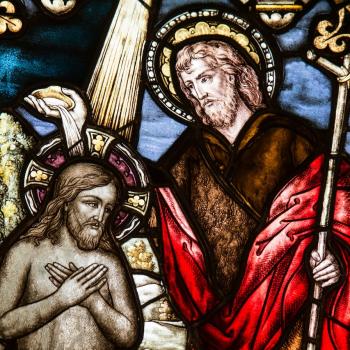The hook-up of an obscure religious community with the bestseller list is weirdly fascinating to outsiders: I'm sure I am not the only who has spent a few minutes Googling "Amish romance novel" or "Hasidic Yiddish spy thriller." The notion of Mormon science fiction or Mormon fantasy must seem just as odd to those outside our community. They're all real creatures, though, and probably a lot more familiar than they seem at first mention. Ever hear of Orson Scott Card, Brandon Mull, Stephenie Meyer?
It's tempting to use these literary specimens to distill some essential truth about Mormon-ness—or Amish-ness or Hasidic-ness (Hasidicity?)—and the characteristic ways of making art that define these sub-cultures, what's sometimes called an "aesthetic." In describing a particular religious aesthetic, one might quite reasonably take the dominant themes and myths of a religious group as the staging ground for the argument. For example, one might consider, say, Yiddish poetry, and suggest that a narrative of exile dominates the Jewish imagination and thus characterizes the poetry itself: "Every true poet lives a kind of diaspora in his own language."
Thinking this way, a Mormon work of art is no more and no less than a work of art on Mormon themes, and it becomes the work of the critic to draw out and explain these themes, looking at scripture, religious practice, community culture, and other artifacts of Mormonism. Mormon art is merely the coefficient of Mormon ideas: a Mormon novel is a Mormon novel, not a Mormon novel. There's a lot to recommend this kind of analysis, with its attention to the particularities of the community from which it arises.
But there are disadvantages, as well. By emphasizing the religious themes of the literature at the expense of its textual form—its engagement with the rules of science fiction, or the conventions of the romance novel, or whatever - one can end up in the curious position of having developed a "Mormon aesthetic" that has everything to do with Mormonism and nothing at all to do with art. One is reminded of C.S. Lewis' dictum: "It is easy to forget that the man who writes a good love sonnet needs not only to be enamored of a woman, but also to be enamored of the sonnet." It could be said, similarly, that the critic who interprets a Mormon novel needs not only to be attentive to Mormonism, but also to be attentive to the novel.
Suppose, then, that an interested observer wanted to formulate an art-centered Mormon aesthetic that attends to broadly formal considerations as much as to Mormon content. How should such an enterprise begin? One could make the case that Mormonism gives rise to unique literary forms, in the way that scholars have shown English lyric poetry to derive from English Protestant doctrine and practice, for example. In the case of Mormon literature, however, it's pretty plainly not the case that Mormon writers have devised new unique artistic forms from their religious milieu. Rather, Mormon writers have borrowed the forms and formats circulating in their particular social contexts. They've made especially good use of what's (sometimes disparagingly) called "genre fiction": science or speculative fiction, romance, fantasy, mystery, and historical fiction. Sometimes all at once.
Our interested observer, then, might take a slightly different approach to the question of form, asking whether Mormon artists demonstrate a characteristic relationship to inherited literary genres. The answer to that, I would suggest, is a vigorous yes.
Mormon culture values the superior performance of shared forms over originality of artistic vision. I'm using "performance" here to mean an affirmative partaking of a traditionally-valued form, without irony or subversion. Most Mormon contributions to American popular culture fall firmly within this category. Think about the Mormon Tabernacle Choir, the multitude of Mormon contestants in square reality show formats like "American Idol" and "So You Think You Can Dance," or Mormons' over-representation in the modern craft and design communities. These phenomena share the same essential structure: the performers inspire and delight their audience through the superior rendition of familiar forms and formats. The prevalence of Mormon genre fiction, I'm suggesting, should be understood in the same spirit.
For some Mormons, the relative popularity of Mormon genre fiction over serious literary fiction is reason for embarrassment or despair. For others it's merely an accident of the structure of the Mormon publishing industry. I suggest that it is neither an embarrassment nor an accident, but a natural extension of the communitarian ethos and the homely ritual practices of Mormonism. The experience of powerful identification and unity with the faith community is central to our religious practice, and we love to build (occasionally kludgy) institutions, programs, domestic rituals, and community events that facilitate that experience: think of Family Home Evening, road shows, testimony meetings, Girls Camp, firesides. To read a novel in which a familiar narrative structure is affirmed and shared among readers and between author and audience is to reproduce that powerful experience of communal identification and unity within a discursive institution.





